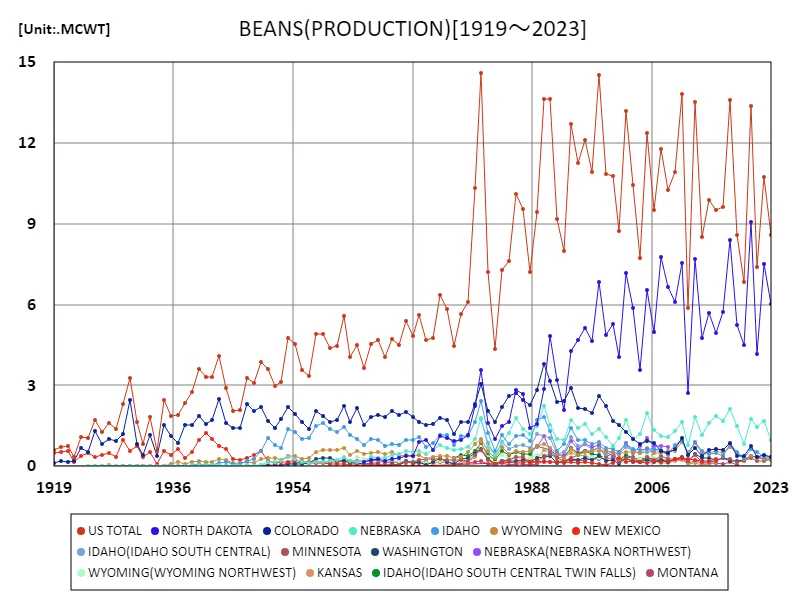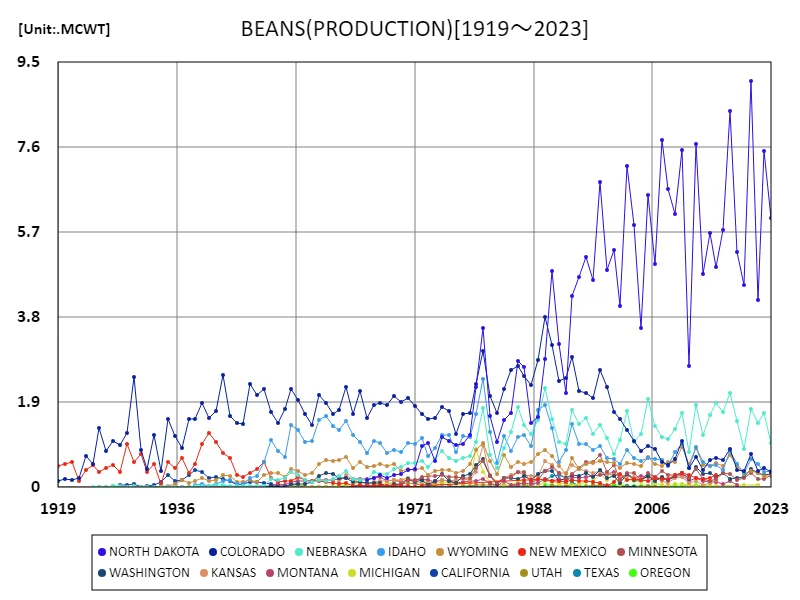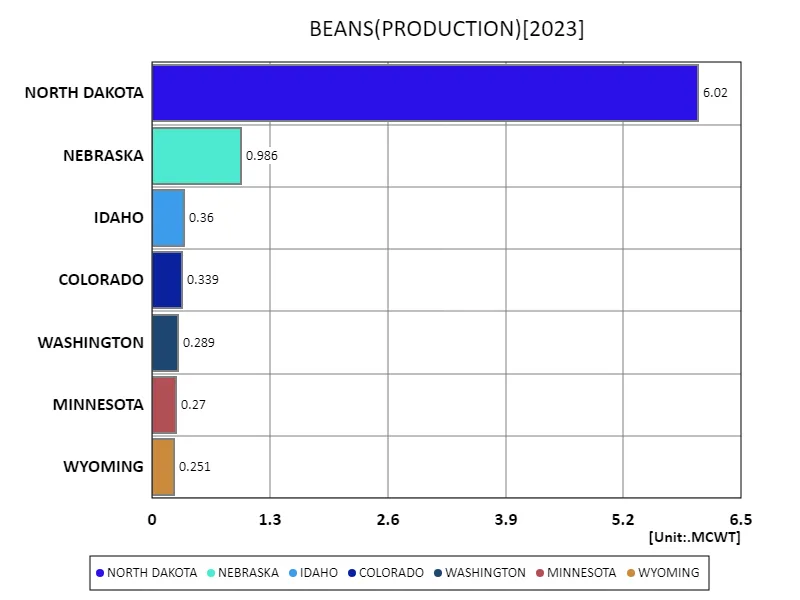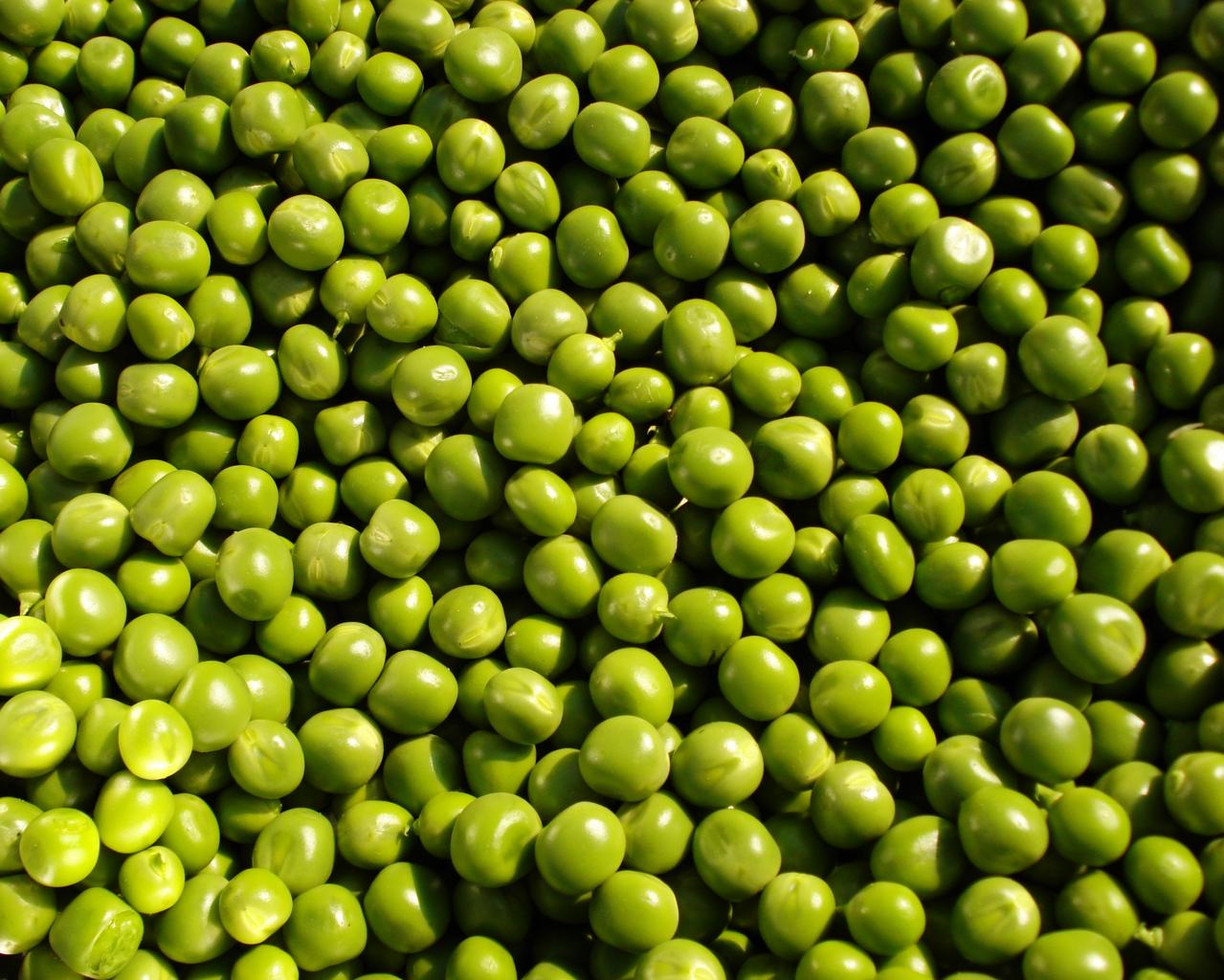Abstract
The latest data on U.S. bean crops shows the 2023 crop total for cultivated beans will reach 17.2 million cwt (mcwt), reflecting the increasing trend seen over the past few years. The United States is a major producer of soybeans, with the Midwest agricultural region being a particularly important production region. Soybean production has been steadily increasing over the past decade, driven by improvements in agricultural techniques, improved weather conditions and growing demand. This has strengthened U.S. bean crops’ supply capacity in domestic and international markets, particularly for increased use as animal feed and edible oil. In the future, further improvements in production efficiency and market changes will be key.
Peas production
Looking at data on the US bean crop, we can see the transition from 1928 to 2023. The U.S. annual crop total peaked at 27.1 million cwt (mcwt) in 2016, but the 2023 total will be 63.4% lower at 17.2 million cwt. This decline is due to a combination of factors including agricultural diversification, climate change and price fluctuations. While production remained relatively stable between 1928 and the 1960s, from the 1970s onwards, technological advances and the introduction of agricultural machinery led to increased production. As demand for soybeans increased internationally in the 1990s and early 2000s, production peaked, with record production recorded in 2016. However, it has since been on a downward trend due to price fluctuations, trade frictions, and environmental regulations. Recent trends include adjusting cultivated areas in response to the effects of climate change, as well as promoting the adoption of sustainable agricultural practices and genetically improved varieties. It will be interesting to see how these factors affect production volumes going forward.


The maximum is 14.6MCWT[1981] of US TOTAL, and the current value is about 59%
Peas Production (50 US States)
Looking back at North Dakota’s bean crop data, a notable change emerges between 1928 and 2023. The annual crop total peaked at 12.3 million cwt (mcwt) in 2016, but the 2023 total declines by 48.2% to 5.9 million cwt. This decline is due to several factors. First, North Dakota is a major bean-producing state in the United States and production has been increasing over the past few decades. A particularly high production volume was recorded in 2016, but the subsequent decline is thought to be due to climate change, price fluctuations, and changes in agricultural policies. Abnormal weather, dryness and excessive rainfall in recent years have affected crop growth, resulting in reduced production. Additionally, agricultural diversification and increased planting options are also contributing factors. North Dakota farmers are increasingly choosing other crops instead of soybeans, which is contributing to the decline in production. In addition, technological innovations in agriculture and the introduction of new cultivation methods will also have an impact on production efficiency and yields. Overall, fluctuations in bean crop production in North Dakota are driven by both natural conditions and market dynamics, making the transition to sustainable agriculture a key challenge.


The maximum is 9.09MCWT[2020] of NORTH DAKOTA, and the current value is about 66.3%
Peas production (latest year, 50 US states)
Data for 2023 shows that production volumes for bean crops in the United States show notable variations across various regions. Montana had the largest production at 9.02 million cwt (mcwt) for the year, with an average production of 2.86 million cwt and an overall total of 17.1 million cwt. The data makes it clear that Montana plays a central role in production. The trend over the past few decades has been an overall increase in U.S. bean crop production, but there is considerable variation across regions. Some states, such as Montana, produce more than others, while other states produce less. In Montana in particular, vast acreage and favorable weather conditions support production, but elsewhere climate change and market fluctuations impact production. Additionally, the relatively low average production volume compared to the overall total of 17.1 million cwt suggests a high level of concentration of production overall. This can make them more dependent on particular states and more sensitive to agricultural policy and market fluctuations. Overall, bean crop production in the United States varies widely from region to region, with production in certain states having a major impact on national production. In the future, it will be interesting to see how innovations in climate adaptation and production technologies will affect this trend.


The maximum is 6.02MCWT of NORTH DAKOTA, the average is 1.22MCWT, and the total is 8.52MCWT



Comments